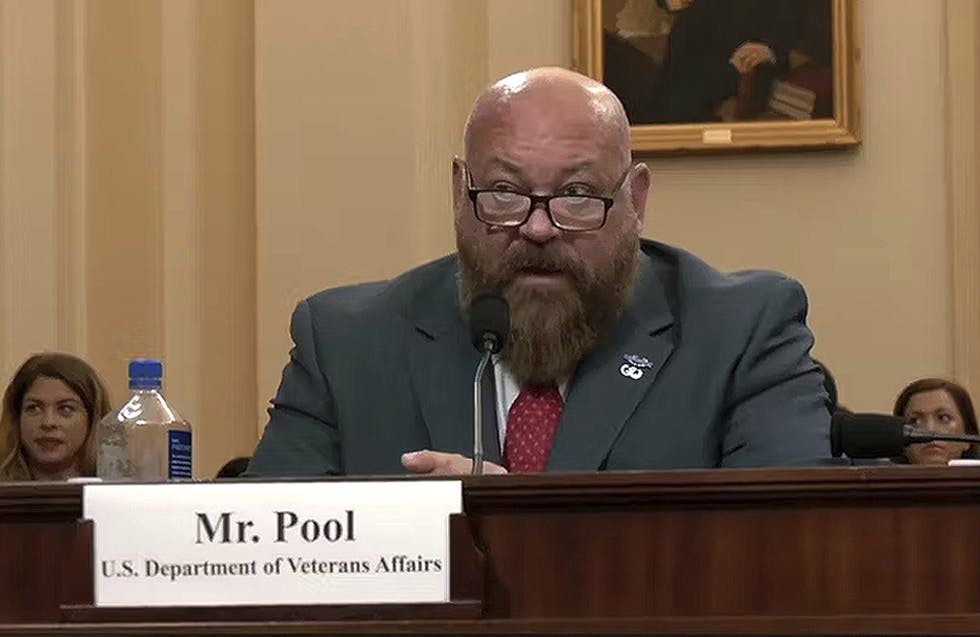What Contractors Need to Know About VA’s Vaccine Guidelines
The agency will be instating public health precautions to halt the spread of the Delta variant and protect the health of veterans and caregivers.

The Department of Veterans Affairs has updated its employee vaccine guidelines to include new precautions for contractors who work with the Veterans Health Administration (VHA), its health care and medical research network.
VA was the first agency to release a full-scale vaccine mandate for its workers in July 2021, which required all of its Title 38 healthcare workers — a category that includes directly employed physicians, dentists, podiatrists, orthodontists, anesthetists and physician assistants — to receive the COVID-19 vaccine within eight weeks. This was quickly followed by the Biden administration releasing a similar mandate for all federal employees.
VA Secretary Denis McDonough cited the spread of the COVID-19 Delta variant alongside the increasing rate of COVID-19 hospitalizations and fatalities as the prime motivator for a vaccine mandate, a priority that is aligned with VA’s mission of providing veterans care and support for America’s public health as a whole.
Following these mandates for VA health care workers, the agency also updated its vaccine requirements to cover contractor employees effective Oct. 8. These employees fall under the greater category of health care personnel and include those who work in or travel to VHA locations with potential for exposure to patients or infectious materials. They also include contractor personnel providing home-based care to veterans and other personnel whose duties put them in contact with patients outside VA medical facilities.
Published as VHA Directive 1193, this announcement “replaces the July 2021 publication” by expanding the vaccine mandate to all health care personnel — whether directly employed or contractors — who work within the VHA’s broader care and maintenance infrastructure. This directive is currently scheduled to persist through August 2026, setting a minimum five-year timeframe for the vaccine mandate.
In summary, the mandate states that:
“Society and professional norms set the expectation that [health care personnel] ‘do no harm’ to the patients they treat and serve. Employees of VA work to serve Veterans as part of the health care system and have a duty to protect their colleagues and the [health care personnel] with whom they may interact. This expectation can reasonably be applied to all health care staff in interactions with their colleagues such that employees of VA who work to serve Veterans as part of the health care system also have a duty to protect their colleagues. Accordingly, employees must take every reasonable step to prevent transmission of SARS-CoV-2 in VA medical facilities.”
With the Delta variant leading to the highest rate of hospitalizations since January 2021 — approximately two to three months before vaccines became widely available — the White House has announced other federal agencies could also instate more expansive vaccine mandates that follow on the heels of VA’s directive as a means of containing the pandemic and decreasing strain on America’s health care system.
This is a carousel with manually rotating slides. Use Next and Previous buttons to navigate or jump to a slide with the slide dots
-

VA CIO Targets Modern IT and Smarter Workforce Alignment
Agency leaders told lawmakers they are focused on trimming legacy systems and restructuring its workforce to streamline operations.
3m read -

VHA’s AI Chief Led NIH’s New AI RFI
The agency's AI chief Gil Alterovitz helped develop a plan that hints at how NIH is charting the future of AI and biomedical research.
5m read -

Trump Taps Maj. Gen. John Bartrum to Lead VHA
Nominated for VA's top health role, Bartrum brings over four decades of military and public service to the agency.
3m read -

VA Secretary Tells Congress Tech Efficiencies Will Help Offset Workforce Reductions
Technology improvements will help allow department to maintain veteran care, VA leadership tells Senate Veterans Affairs Committee.
-

Data Modernization for Federal Health Enterprise
Technology and modernized data systems are opening up new frontiers for health care clinicians, agencies and patients.
37m watch -

Bird Flu Highlights Modernization Opportunities in Public Health Data
Experts are expanding data sharing and leveraging GIS technology to improve bird flu tracking, prediction and response.
5m read -

HIMSS: AI's Role in Health Care Innovation, EHR Compliance
Federal agencies and industry partners are increasingly exploring AI use to improve health care.
13m watch -

HIMSS: HL7 Standards Boost Health Data Interoperability
For over 30 years, Health Level Seven International (HL7) has set the standard for electronic health information worldwide.
13m watch -

HIMSS: DHMS' Enterprise Approach to Health Care Interoperability, Innovation
The agency’s enterprise data program is modernizing data sharing within EHRs for the military.
16m watch -

HIMSS: AI Revolutionizes Federal Health Services
NTT Data’s Noel Hara shares insights on AI, efficiency and innovation in IT strategy and healthcare outcomes.
8m watch -

HIMSS: Bolstering AI, Interoperability to Transform Veteran Health Care
At HIMSS, Dr. Shane McNamee and Dr. Johnathan Nebeker discuss how they’re improving data to unlock AI’s full potential.
16m watch -

APIs Are Supporting Community Care Interoperability at VA
The agency is seeing success with initiatives like its Veterans Interoperability Pledge and USCDI standards in supporting veteran health care.
7m read
















